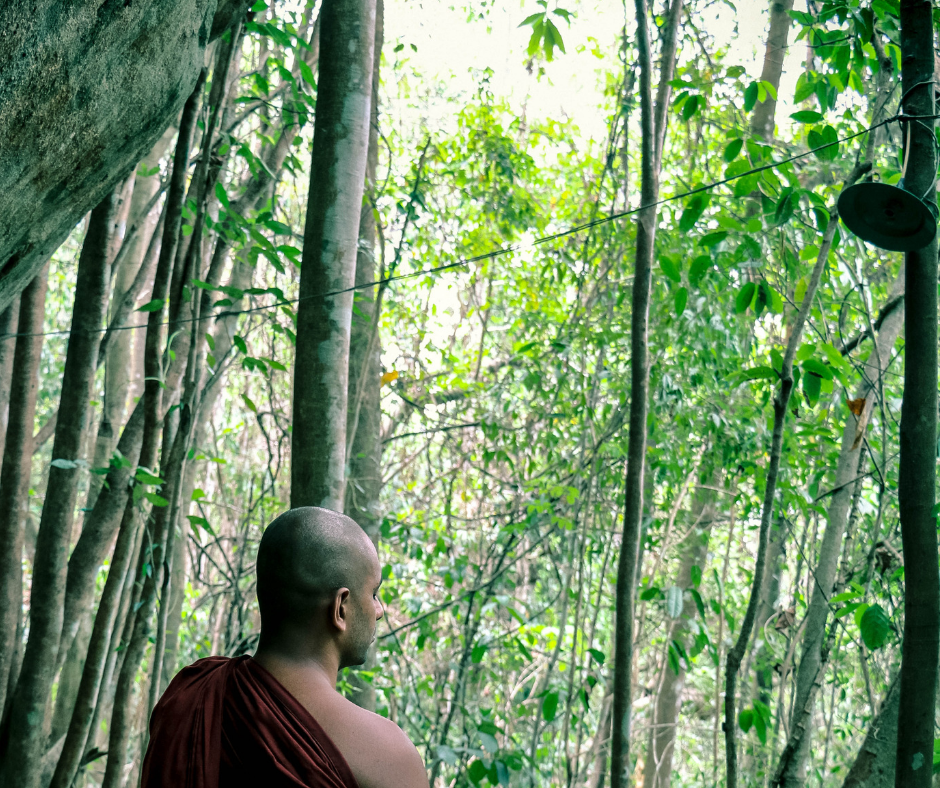 In The Myth of Sisyphus, Camus wrote that weariness awakens consciousness, that “Everything begins with consciousness. Nothing is worth anything except through it.”
In The Myth of Sisyphus, Camus wrote that weariness awakens consciousness, that “Everything begins with consciousness. Nothing is worth anything except through it.”
In the last few months, I’d been weary—sleeping, eating, exercising, commuting, working, preparing for more work, sleeping, and repeat—but I didn’t feel any consciousness awakening, and I still felt like I was waiting for that “everything”, or at least something, to begin.
I wanted to immerse my bare hands in the soil of life—to feel the softness of joy, the moisture of awe, and the cool warmth of peace, between my fingers. I wanted to feel alive: for my soul to urgently thrust itself into each morning, as if the spinning world depended on it.
Instead, I was stuck in traffic.
In the world of natural health junkies, spiritual community dwellers, and backpacking hippies, a Ten-Day Vipassana Retreat is a right of passage. My friends, colleagues and fellow travellers all assured me that the experience changed them. They all reflected on their ten days spent in the woods in silence, sitting for excruciatingly long hours, as catalysts for growth. They’d burned off dead and stagnant parts of their egos, let go of their cravings, and emerged shiny, with a renewed zest for all their lives had to offer.
Listening to their stories, I imagined myself in their places: sitting mute and contemplative in the dark. Through eliminating all input, I expected the Universe (with a capital U, naturally) to reveal rich meaning beneath its monotonous surface. Plus, I heard the food was good.
So, I signed up. A few months later, with a backpack filled with drab clothes and a meditation cushion, I was driving to the Dhamma Torana Vipassana centre, located outside of Barrie, Ontario.
A sleepy hippie greeted me as a I pulled into a virtually empty, gravel parking lot at the entrance to the centre.
I got out of my car and smiled at him, “I’m here for the Vipassana retreat.”
“Yeah, man,” He replied with eyebrows raised, as if searching his brain for what I was referring to. “Hey, though, do you mind parking your car closer to that truck? There’s going to be a lot of us trying to fit in here.”
I looked around for evidence of this meditation-hungry crowd. Instead, there were a handful of cars parked, including a large black pick-up truck and my own.
“Sure,” I said, “Do you mind just watching my bag?”
I squeezed my car up against the truck. Now we were two cars huddled side-by-side in the large, empty lot. It looked ridiculous but, you know, we were a community now.
“I couldn’t lift the bag,” Said the hippie-turned-parking-attendant, half-apologetically. He’d left it on its side in the dirt. The bag contained two pairs of pants, two t-shirts, some shampoo, and meditation cushion. It probably weighed three pounds.
I smiled tightly at him, hoisted the bag onto my shoulder, and made my way to the registration house to get my room key. Then I headed over to the women’s side of the property to find my cabin.
The cabin was a tiny room containing two beds separated by a shower curtain. I was supposed to share with a roommate, but she hadn’t arrived yet.
How do you room with someone you can’t talk to or look at? I prayed that my roommate wouldn’t show up and that I’d get the room to myself.
I put my things away and headed to the dining hall for dinner.
We were told to hand over our electronics, writing materials, and other valuables. I handed over my car keys so that I wouldn’t be tempted to escape. As my things were being placed into bins, I felt like Austin Powers preparing to be cryogenically frozen.
In fact, the retreat centre, while beautiful, had prison-like undertones. Signs declaring “Course Boundary” stopped you from exploring—or going back to the parking lot. Days later I would stare at that sign longingly, dreaming of the freedom represented by my car. Men and women were segregated into completely separate areas of the property. We weren’t allowed to talk and make eye contact once the silence was imposed. We were also told not to bring flashy, tight or flamboyant clothes and so many of use looked like prisoners: heads down, attention turned inwards, clothes dark, loose and drab.
Dinner was vegan food. It was good. However, having been a recovering vegan in the past, I wondered if I’d finish the retreat like the parking volunteer, too weak to lift my own three-pound bag.
After dinner we were given a speech on the rules: no talking, texting, touching, making eye contact, gesturing, wearing tight clothing, doing yoga, running, writing, reading, sunbathing, killing (even mosquitos), sex, drugs, rock ‘n’ roll (or any other music, for that matter), alcohol, eating dinner (just some fruit for newbies), and so on. No Phone, no pets, no cigarettes. It was going to be a long ten days.
I couldn’t wait.
I wondered what amazing insights would emerge from these ten days of spacious silence.
It was time for the first meditation, after which we would observe the Nobel Silence. We settled onto our assigned cushions. I had brought my own meditation cushion and saw that others had brought their own supplies too. Many brought intricate contraptions for sitting: meditation benches, special blankets, chairs, back rests, and knee pads. Rather than preparing to sit for an hour, it looked like they were readying themselves to enter the Earth’s orbit.
The meditation started. The teacher of Ten-Day Vipassana retreats, S.N. Goenka, is dead and so instruction is delivered by a series of tapes he’d recorded, presumably, while still alive.
One of the two assistant teachers pressed play and Goenka’s chanting began. Goenka’s would be the only voice I’d really hear for ten entire days, and it had an alarming amount of vocal fry.
I fidgeted throughout the hour of our first meditation. My meditation practice up until that point consisted of daily thirty-minute sits. I don’t think I’d ever sat for an hour. In fact, after twenty minutes, I’d usually experience numbness in both legs that sent me crawling around on all fours painfully trying to restore blood flow. During this first hour I kept crossing and uncrossing my legs. It wasn’t just me; silence in the hall was punctuated by the cacophony of restless shuffling.
Five more minutes of chanting followed by a gong finally signalled the end of my antsy misery. I slowly and silently got up, keeping my eyes inoffensively cast in front of me, and shuffled, among the tribe of other zombies, out of the hall and back to my quarters. It was barely 9 pm, but I flopped exhausted onto my little bed and immediately fell asleep.
The next day, loud gonging heaved me into the pitch-dark early morning. It was 4:15 am. I dressed in the dark, shuffled to the bathroom to brush my teeth, and headed to the meditation hall for the first two-hour meditation of the First Day.
The schedule was terrifying. We were to wake at 4:15 in the morning to sit for the first meditation, two hours, at 4:30. A gong would then signal breakfast for 6:30 am, after which we’d sit for another hour of meditation. Then we were to return to the meditation hall or go to our rooms and sit for two more hours. Lunch was at 11:00 am, followed by another break. Then, four hours of meditation followed by a snack break, where new students were allowed to eat fruit and drink tea. There was no dinner.
After the snack break, was another hour-long meditation, then a discourse where we were to watch Goenka lecturing—the only entertainment of the day. Then more meditation—45 minutes. Bedtime was 9:30 pm. Lights were to be out by 10 pm. With the first wake-up gong sounding at 4:15 in the morning, and nothing to do in the evenings, I doubted that the early bedtime would be a problem.
The first thing I did was count: eleven hours of meditation. Each day I was to spend eleven hours sitting on a cushion, keeping my back straight, and watching my breath. Besides eating, and walking in the forest during breaks, that was to be my life for the next ten days. How was I going to handle this?
“I think you’ll make it to day seven and then decide you’ve had enough,” a skeptical friend had told me before I’d left. I’d been insulted. Now I doubted my own convictions. Day Seven seemed very far away.
Most of my friends had told me that they’d wanted to leave by Day Three.
By Day Two, however, I was done. My legs and back ached and, halfway through the second day, I decided that I couldn’t do another second of meditation. “I can’t do this anymore!” I exclaimed in my head. Besides Goenka’s, the Voice in My Head was the only voice I’d had access to for the last two days. And it happened to be mistaken. I kept on.
During my 32 years on the planet, I don’t believe I’d spent a day without communicating in some way, shape or form with another human being. Since I could put words together, I hadn’t spent a day in silence. Since I could read and write, there wasn’t a day in which I hadn’t engaged with some form of written text.
I missed it. While taking bathroom breaks, I stared intently at the sign outlining the shower rules. I fascinatedly read about using the hair catcher while showering. I read how we were to clean it out after and dump any hairs in the garbage. I studied the rules about drying and squigeeing the shower walls after use. “With Metta,” The notice signed off. With Metta. Withmettawithmettawithmetta. I read the words over and over again. Bathroom reading. It might as well have been War and Peace.
I expected the days to soak me in serene silence. I was wrong. As it turned out, my head was louder than an elementary school cafeteria during lunch hour. But, unlike the lunch break, there was no end to the noise.
“I eat brown food in the morning with brown tea and green food for lunch with green tea,” My inner monologue babbled gaily. It was true: breakfast was always oatmeal and prunes, which I accompanied with black tea. Lunch was a green salad and some soup or curry. I ate it with green tea. “Maybe I can be vegan,” The Voice in My Head chattered, optimistically, “The food here is so good. I could eat like this all the time. I don’t even miss dinner! Maybe I should start doing more intermittent fasting. I wonder if they sell a recipe book, oh, I can’t wait for breakfast tomorrow morning!”
And, “What colour pants am I going to wear tomorrow? The brown ones or the black ones? Brown or black? Black or brown? Should I wear the brown ones with the white shirt and the black ones with the blue shirt? Or the blue ones with the—” I’ll spare you the rest.
I had entire conversations with people in my head. I wrote, rewrote, and edited monologues, conversations and imaginary dramas. I crafted responses from the characters I was arguing with. I practiced my lines and honed them.
I humbly discovered that it was not a chaotic world, filled with sensory distractions, that stifled some creative genius locked somewhere within; the chaos was removed and no genius emerged. Instead, when left to its own devices, my mind became a shallow simpleton bouncing senselessly to topics like the clothes I was wearing, the things I was eating, and people I was dating. How disappointing.
During the eleven hours of meditation, my mind and body rebelled. Every itch, twitch and irritation, mental or physical, would send me crossing and uncrossing my legs, refolding my hands, opening my eyes, and stretching my neck—anything to avoid actually meditating.
My only reprieve was meal times. I would wait for them, like Pavlov’s dog, salivating in anticipation of the gong that would release me from the hell of sitting.
On Day Three, however, I noticed something different. I was sitting in meditation and I wanted to move: do something, like cross my legs a different way. I felt tension and frustration rise within as I resisted the urge. The resistance was like a boulder to push against. It had edges, viscosity. I couldn’t push anymore. I relaxed, softened. I opened.
And with that, the resistance popped. I felt immediate relief.
It was as if my mind and body were wrapped in a crumpled fabric. Each knot and wrinkle resembled an agitation, a restlessness, a mania that arose from within my physical and emotional self. Pushing up against these wrinkles would only tighten them, causing more agitation. But, when I began to breathe, to dissolve their solidity, they began to soften, and pop, like bubble wrap. The fabric began to iron out. I was calm.
I started to notice bigger knots: my relationship with uncertainty, for instance, that seemed too monstrous to pop, however the mini bubbles of impatience started to disappear as they arose, one by one.
Openness.
Openness provides relief from suffering.
Maybe I could survive this.
On Day Three Impatience and I got to know each other. Impatience has been a theme in my life, a low-level agitation that manifests in restlessness: my desire to connect on social media, to distract with technology and day-dreaming, to tweeze hairs and do dishes instead of doing work, and to lurch through life with my head pushed forward, oblivious to my surroundings.
I moved through life like I ate: inhaling a fresh spoonful before swallowing the first. I wasn’t tasting my food. I wasn’t tasting life.
During one particularly turbulent moment in meditation, when a wave of impatience hit, so did a series of images: family weddings, babies being born, pets passing away, family members passing: images of events that had not yet occurred, but almost certainly would. I was racing towards the future, which would bring me both wonderful experiences and inevitable pain. And, of course, at the end of it all would be the end of me. What was the rush?
I brought my attention back to my breath. Some more knots in my mind’s fabric opened.
On Day Four I recognized that, at the heart of this impatience was a craving for certainty. Underneath that craving: fear.
What I am afraid of? I asked the blackness.
Almost immediately, from some depths of my psyche, the answer surfaced.
I’m afraid to suffer.
Suffering, the Buddha’s first Nobel Truth. Life is suffering, or Dukkha. Like every other being who had ever lived, as long as I was alive I would suffer. If I craved certainty, then this was it.
We began to practice Vipassana on Day Four. For the past three days, my entire world had been reduced to the rim of my nostrils where my breath passed. The technique of focussing on the breath at the nostrils is called Anapana, and its goal is to sharpen and focus the mind.
Vipassana, or the development of equanimity regarding the impermanence of nature, and the truth of suffering, focusses on body sensations. We first began to scan the body from the tips of the toes to the top of the head (“Staaart from. the. topofthehead. Top of. Thehead,” Chirped Goenka’s voice on the recordings), a relatively simple technique in theory that proved to be excruciating in practice.
If the first few days had introduced me to the manifest agitations and disquiets in my body and mind, Day Four presented me with the full-on war raging within. For three hours a day we were to resist the urge to move. My body was on fire.
Demons in my head commanded me to move, get up, scream. Others shouted at me to stay still. Still others urged me to quit. Amidst their shouts was harrowing physical misery.
I felt like I was under the Cruciatus Curse. In fact, the whole retreat was starting to seem like a JK Rowling novel, or some other Hero’s Journey. I had set out to conquer evil only to find that all evil came from within, and was now being asked to face it bravely, conjuring up a Patronus of equanimity to protect me from being consumed by this hellish fire.
“The only difference between a Ten-Day Silent Vipassana Retreat and a Harry Potter novel is that ‘He Who Must Not Be Named’ is literally everything,” I thought, sardonically.
From Days Four to Five, I emerged from every sitting broken and exhausted. Being on Day Five was like reaching the middle of a claustrophobic tunnel. I was halfway through and still had just as far to go. I scanned the deadpan faces of the crowd during mealtimes to see if anyone else had spent the last hour being electrocuted.
Goenka said the sensations of fire and electricity were Sankaras, mental cravings that embed themselves in our physical bodies and cause suffering. An intense sensation was simply one of these Sankaras floating to the surface of the body. If we met it with “perfect equanimity”, it would be eradicated, and we would be cleared out for our next incarnation.
These body sensations—the sharp, twitching, numb, searing, blinding, and even pleasurable— were a representation of nature itself. Sensations arise in the body and pass away; they are impermanent, Anitya. Through first being aware of them, and then meeting them with openness, without clinging or aversion, we can be free from suffering.
“Maintain perrrrrrfect equanimity. Perrrrrrfect equanimity, with the understanding of Anitya.
“Anitya…. Anitya….” Goenka’s recordings crooned.
Sapiens author Yuval Noah Harari, also a long-time Vipassana practitioner, states, “Meditation is about getting to know the most ordinary, daily, natural patterns of the mind, body and emotions, to observe reality as it is. If you can observe, to some degree, reality as it is, without running away to stories and fictions, you will be a more peaceful and happy person.”
Well, I certainly wasn’t happy.
On Day Five I was being burned at the stake. Someone had lodged a red hot poker into my right flank, just to mess with me. “I will never be able to walk again,” My mind blabbered, “This is torture. I’m becoming permanently injured. I can feel the meniscus in my knees slowly tearing—“
Goenka’s chanting began, indicating we had five more minutes of this hell. I relaxed, even though we still had five more minutes of this hell. The mind is a ridiculous thing.
—Donnnnng….
Freed by the beautiful, beautiful music of the gong, I sprang up. I expected to hobble, in pain, clutching at my back, working out stiffness in my knees. I anticipated the inevitable sharp pain that would appear in my ankles as I took my first step.
Yet, as I walked out of the meditation hall to stand in the July sun, I noticed that there was not a twinge of pain, a tightness, nor an ache to be found. My body felt perfectly fine. On the contrary, I actually felt great: light and supple. It felt like I was floating.
Hm.
By the time Day Six arrived, I was greeting the pain like an old friend. I noticed that discomfort came, not from the sensations themselves, but from the mind’s anticipation of and resistance to them. If I expected an arising sensation to be painful, I would brace myself against it, creating tension. And, after the sensation had faded, my mind would still grip it, creating a story of aversion.
So, I stopped calling it pain. Instead, it was a series of sensations: numbness, vibration, tingling, spark, heat, radiation, burning, but not pain. I noticed the sensations that disappeared as soon as they materialized, like shooting stars across my back. Others were solid, like clumps of cement hanging out in my body for the entire hour. I now easily sat for an hour without moving, watching this orchestra of sensations transpire across my flesh.
The war was ending. I was winning.
I was free.
Four days to go.
Anitya.
Sometimes impermanence isn’t fast enough.
On Day Seven, I settled into meditation, welcoming it now. I dropped into my breath, and began practicing Vipassana, sweeping my attention over my body, observing the sensations that were present, just as Goenka instructed.
Curiously, the sensations dissolved. There was no sensation, there were no Sankaras, there was no body. I could still feel the line where my lips met, and where my hands came together in my lap. Other than these two black outlines drawn in space, I had dissolved into ether, the atoms of my body emitting a subtle vibration that merged with those that surrounded it.
It wasn’t surprising. For the last seven days I’d been eating oatmeal and meditating in the woods without speaking to anyone. Now my entire body was evaporating. Nothing was surprising anymore.
I later learned that this phenomenon was called a “Free Flow”. It results from absolute openness: from a mind that is both equanimous and subtle. Solidity dissolves, and what is left is the vibration of atoms, all transient, anitya. All impersonal, Anatta.
The Three Buddhist Marks: Anitya, Anatta, Dukkha.
Impermanence, Non-Self, Suffering.
Now that I was One with, whatever it was I was one with, I figured I might as well seek some spiritual answers. Or at least make a wish or something.
I thought of what I most wanted in the world. “I want connection,” I told the Universe, “I want deep, connected relationship.”
Amidst the vibrations, something answered. A simple, Why?
Hm. Why, indeed? I’d never entertained the question.
I want to be loved, emerged my answer, from I-didn’t-know-exactly-where, since I was currently nothing. It was like my heart was speaking instead of my head. The utterance arose out of space, before dissipating, like smoke rings from a caterpillar’s hookah. Then, there was silence.
The energy, or entity, or my Higher Self, whoever I was talking to, seemed amused at my naivety. I could feel her compassionate chuckle vibrating into the atoms that buzzed where my body had once sat.
You already are,
the amused response manifested from the darkness into which I was dispersed.
You already are.
And, at that moment, nothing seemed more true. Nothing can give us what is already in our basic nature.

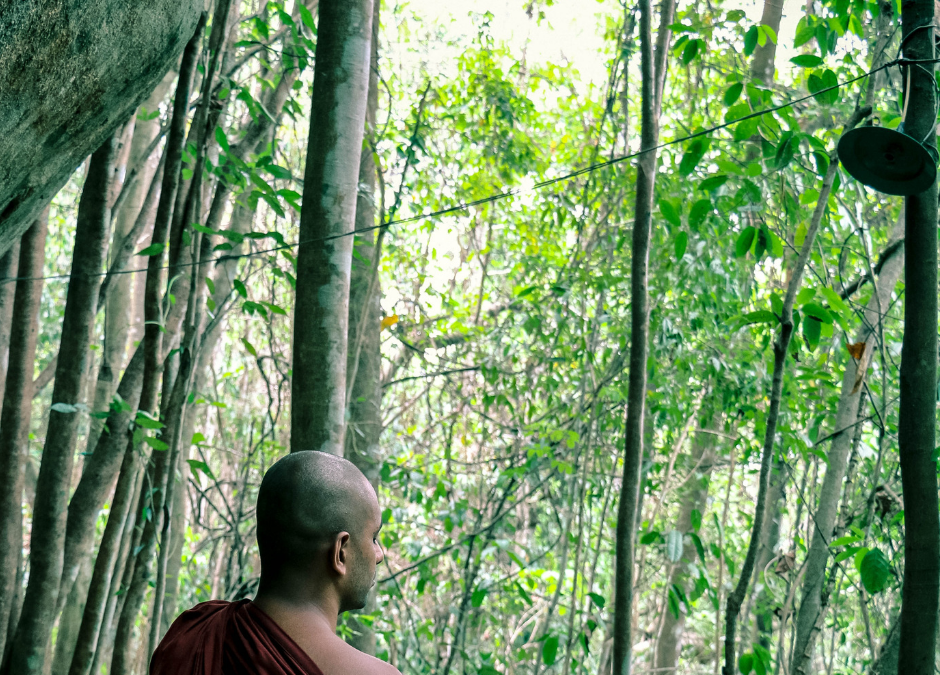

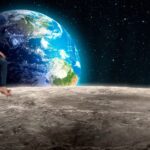
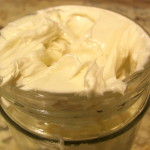
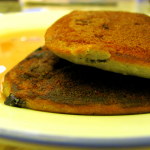
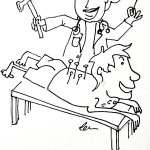

Thank you Talia for posting this detailed account. I havd just returned from a brief vipassana retreat and have been very curious about what I could expect from the 10 day one in Barrie. This is very helpful. I admire your courage in persisting through the intense discomfort, often without a roadmap. Please post a follow up article. i.e. how has what you learned impregnated your being? Months later, how are you different? And what patterns did you choose to return to?
Hi, Suzy! Thanks for the comment! I can say that this took me so long to write because the experience was still percolating inside my body and mind; it was hard to write a story with a narrative that consolidated a variety of the experiences. Definitely a part that was left out was the memories that would randomly surface during moments of deep meditation.
My mind never did quiet in the end…
Being a few months out of the practice, I can say that, despite me dropping the ball A LOT on my daily practice (they recommend 2 hours a day for maintenance and for me that’s just not feasible if I’m going to work, eat, exercise, sleep, and have a social life). I try to sit for 30 minutes most days, but haven’t been doing great with it.
Some things that have permanently changed: parts of my brain definitely were rewired and I WAS able to bring these lessons into my life, which encouraged further rewiring. As a friend of mine says, we can sit on a cushion all we like, but until we’re able to bring those lessons into our daily life, what are they good for?
My relationship to pain is VASTLY different. Almost alarmingly so. My fear response is different as well.
I definitely would like to do the 10-day retreat again next year and see if more layers are unlocked from repeating the experience on a regular basis.
Looking to hear about your experience if you decide to do it!